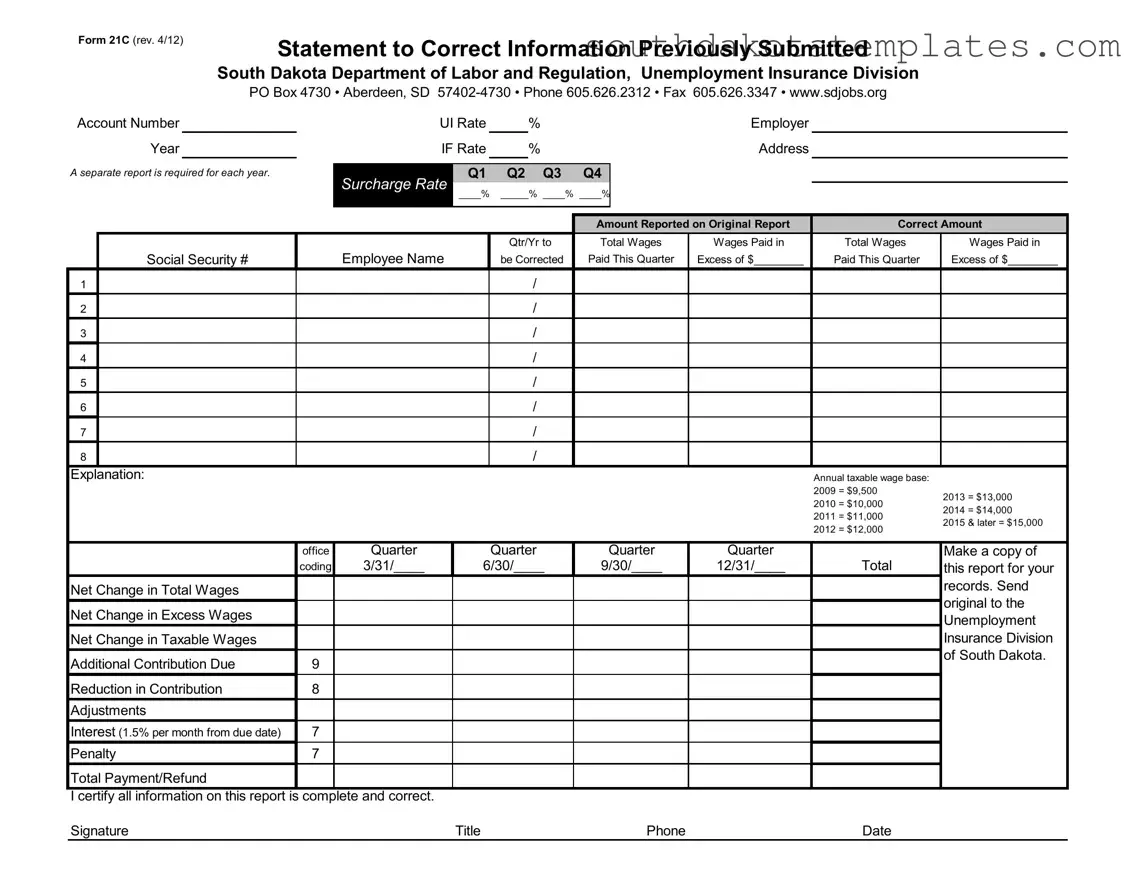South Dakota From 21C Form
The South Dakota Form 21C is a document used to correct previously submitted information regarding unemployment insurance. This form is essential for employers who need to amend wage reports or correct inaccuracies in their filings. Ensuring that your records are accurate is crucial for compliance and can help avoid potential penalties.
If you need to fill out the South Dakota Form 21C, click the button below to get started!
Get South Dakota From 21C
